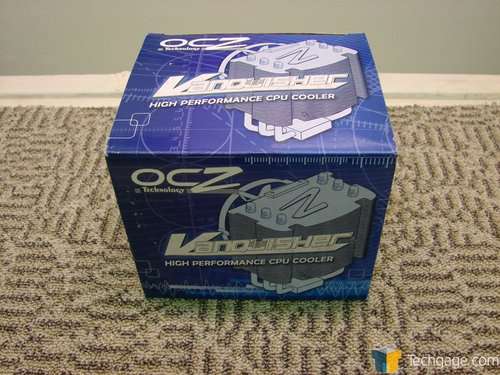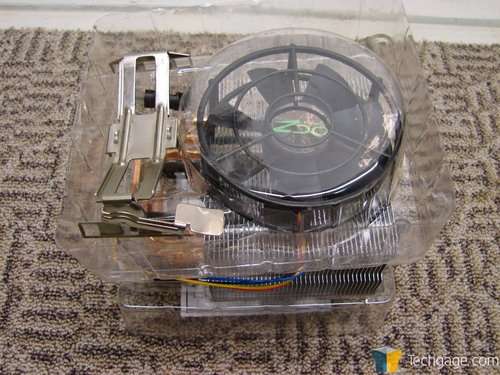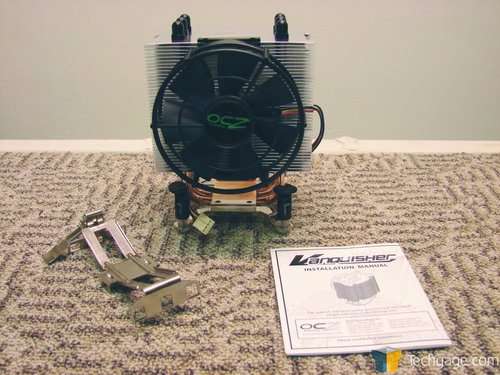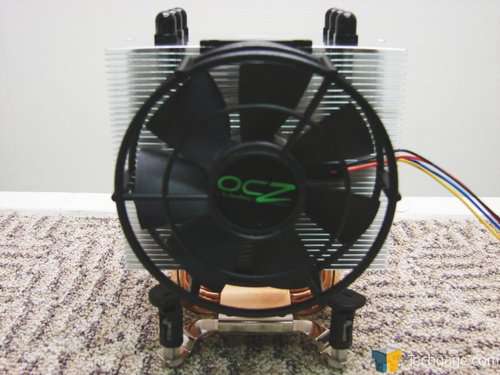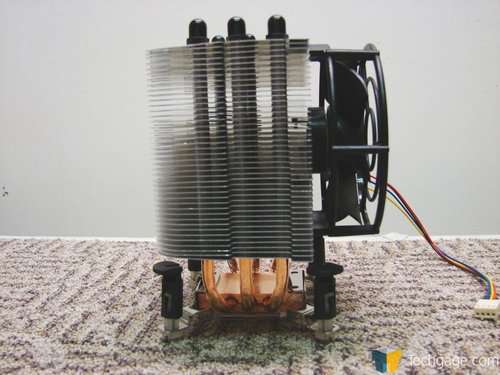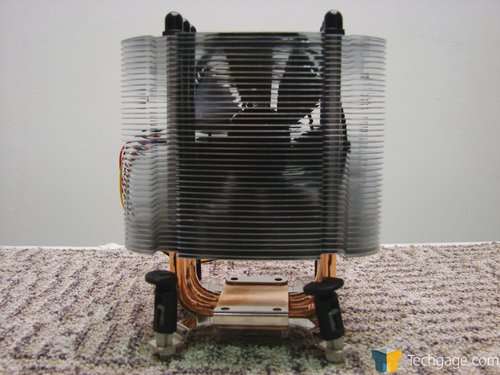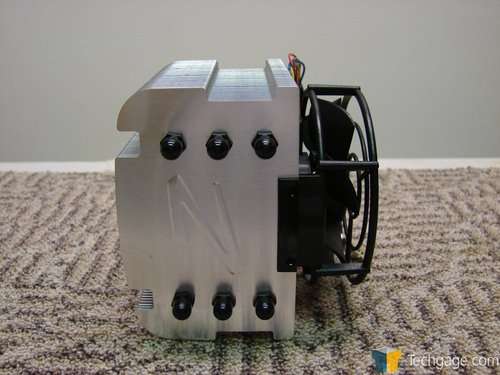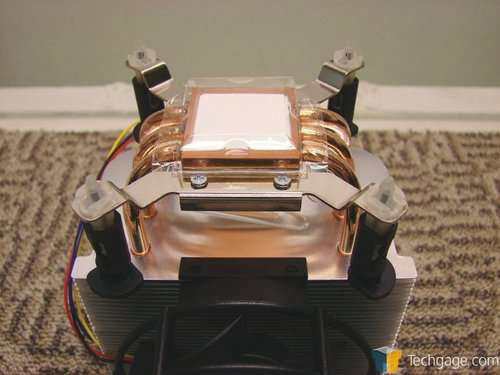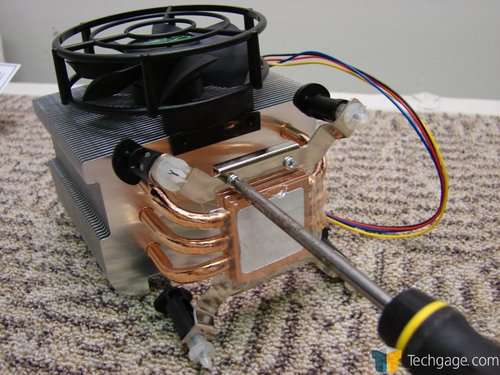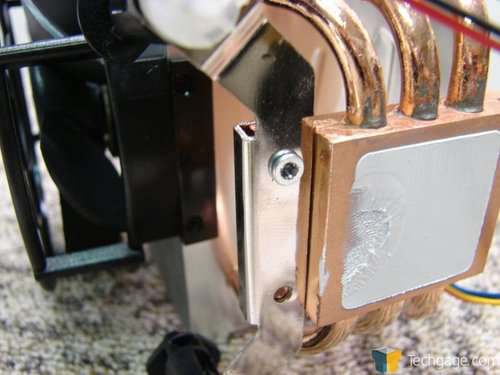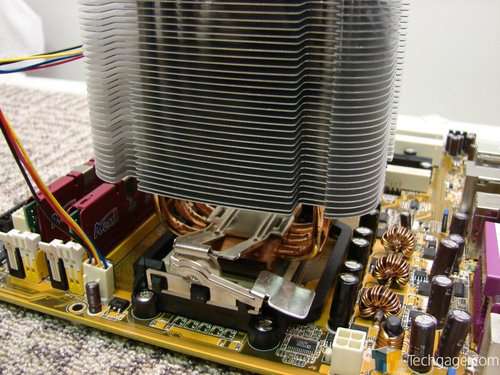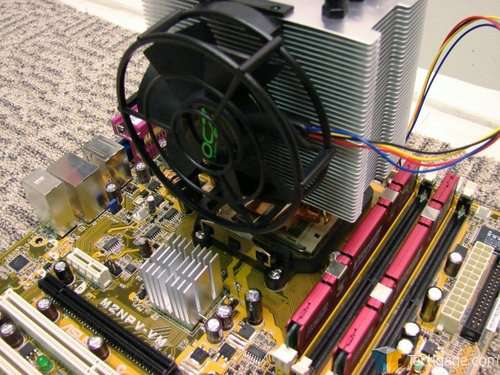- Qualcomm Launches Snapdragon 4 Gen 2 Mobile Platform
- AMD Launches Ryzen PRO 7000 Series Mobile & Desktop Platform
- Intel Launches Sleek Single-Slot Arc Pro A60 Workstation Graphics Card
- NVIDIA Announces Latest Ada Lovelace Additions: GeForce RTX 4060 Ti & RTX 4060
- Maxon Redshift With AMD Radeon GPU Rendering Support Now Available
OCZ Vanquisher CPU Cooler
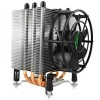
There’s an ever-increasing variety of CPU coolers out there, each competing for your dollar with advanced features, high performance, and bling. We take a look at OCZ’s latest, the Vanquisher, a smaller tower-style cooler that features a large fin structure and a 92mm, frameless fan.
Page 2 – Features; Installation
OCZ Technology’s Vanquisher cooler is a value offering, but it represents the extent to which advanced cooling technology has permeated the mainstream. The Vanquisher cooler promises efficient, quiet cooling of high-performance CPUs; here’s a look at the features that allow the Vanquisher to achieve its performance level.
The Vanquisher cooler comes in a small cardboard box with blue artwork and a short list of the product’s features. Inside, the cooler is cradled in a PET shell, while an additional plastic shell protects the pre-applied thermal compound. The hardware bundle is light – the cooler comes with its LGA 775 brackets pre-installed, while the Socket 754/939/AM2 clip is packaged separately.
The Vanquisher cooler is a tower-style heatsink, with a 92mm frameless fan that spins at 2500 RPM at full blast. Frameless fans are said to produce lower turbulence noise at the trailing outer tips of their blades. The fan features a round guard to keep wires inside the case (or errant fingers) from being caught up in the fan blades, and a 4-pin PWM power connector. The fan is physically mounted at its hub directly to the fin assembly – removal of the fan will require disassembly of the fin structure itself.
The Vanquisher’s fan also uses a ‘ceramic’ bearing system – a variation on the typical sleeve bearing. Sleeve bearing fans fail when the lubricant seeps out of the bearing journal, but ceramic journals retain the lubricant through capillary action in the porous surface, extending the fan’s life when compared to traditional sleeve bearings and enabling the fan to be installed with a vertical orientation without shortening its life.
The Vanquisher cooler’s heatsink uses three 6mm copper heatpipes to transfer heat from the copper base to the aluminum fins. The aluminum fins are spaced about a millimeter apart, which isn’t particularly tight or loose spacing, though it’s enough to present a low airflow impedance to the fan. The fin body’s shape doesn’t have anything in particular to do with airflow – it’s purely cosmetic. The heatpipes are capped at the ends with plastic pieces, which have a tendency to fall off – I found two of them rattling around in the box when I first unpacked the cooler, and they fell off again while mounting the unit.
The Vanquisher’s base features pre-applied thermal goo. However, we hope you don’t look at what’s underneath – the Vanquisher’s base isn’t particularly smooth. This is one heatsink that could potentially benefit from a ‘lapping’ job to add smoothness and luster to the contact surface.
The test platform for this review is a Socket AM2 CPU and motherboard. However, the Vanquisher cooler comes from the factory with the LGA 775 bracket attached. The two-piece LGA775 bracket is attached with four small screws. Three of the screws came out easily, however to my dismay, my screwdriver cut through the fourth screw like butter, hopelessly stripping its socket. I had to take the unit to a friend’s house to drill it out. This isn’t a deal-killer, but be sure to use caution when removing the screws.
The Socket AM2 clip rests on top of the copper base, and centers itself with a pair of lugs that fit between the three heatpipes. Unlike some coolers we’ve seen, the Vanquisher’s AM2’s retention clip is a flip-clip design that’s easy to install. While the LGA775 bracket allows your choice of mounting orientation (front-to-back airflow is typically best in most cases), the Socket AM2 clip only allows the cooler to be installed in the orientation of the motherboard’s mounting bracket.
Next, let’s look at how the Vanquisher fared in our performance testing.
|
|
Support our efforts! With ad revenue at an all-time low for written websites, we're relying more than ever on reader support to help us continue putting so much effort into this type of content. You can support us by becoming a Patron, or by using our Amazon shopping affiliate links listed through our articles. Thanks for your support!




